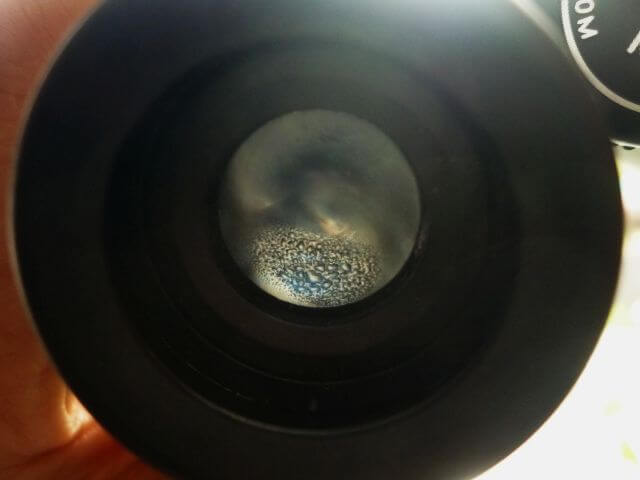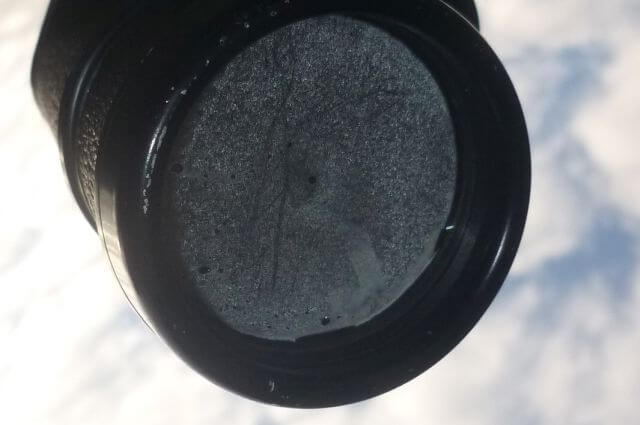Everyone who uses binoculars knows the problem. If you are outside for a while and hold the cold binoculars in front of your eyes, moisture can condense on the cold lenses. The binoculars are fogged up. As long as the condensation is only on the outside of the lens, the problem can be solved very easily by just wiping the moisture off the lens surface.
It’s a much bigger problem when the inside of the binoculars fogs up. Because if the inside of the lenses fogs up, it can take a long time for the condensation to disappear again, until then the binoculars are usually of little use.
Why do Binoculars Fog up
The fog or mist on the lenses is nothing more than condensed water vapor. This happens when an optical device (or any other object) is exposed to rapid temperature extremes, more precisely from cold to warm.
The moisture in the air condenses on the lenses and the housing, forming a thin layer of water droplets.
This happens in possible scenarios:
- When the binoculars are taken from a cold place (outside) to a warmer place (inside)
- You take cold binoculars and hold them in front of your eyes, and the breath or the moisture from your eyes/skin condenses as a fine mist on the lenses
It is annoying when this happens on the outside of the binoculars, but at least you can wipe it off. It is a big headache when this happens on the inside of the lenses. Because moisture must have gotten into the binoculars when condensation occurs on the inside of the lenses and or the chassis.
You have to dry out the binoculars, because as long as there is moisture inside, every time you take the binoculars outside and it cools down to a lower outside temperature, a fine film of water will condense on the lenses.
So you don’t see so well through binoculars, and in the long term, glass fungus will grow, which is not at all good for the optics.

How to prevent condensation inside binoculars
The simplest method, how to keep binoculars from fogging up, is to make sure that you pick one that is waterproof and O-ring sealed when buying binoculars. The best is a rating of IPX-7 or similar.
Such special binoculars, which are referred to as fog proof, are sealed with o-rings and often filled with inert gas, argon, or nitrogen are used. With these robust, all-weather-resistant or even immersion-resistant models, there is guaranteed no more internal fogging.
But fog-proof does not mean that the binoculars cannot fog up on the outside. To prevent this there are water-repellent substances or hydrophobic coatings (rain guard, lotus effect, etc.) so that no more water droplets form and adhere to the surface of the glass.
Do you have normal, non-o-ring sealed binoculars, the following hints help to prevent fogging
- Use the binoculars only in good dry weather
That can be difficult to do the binoculars are there to be used outdoors and weather changes happen.
- Avoid temperature differences
If there is not a large temperature difference, then no moisture will condense on the binoculars. This can be achieved by bringing it to the same temperature as the area where it is to be used.
Hint: When you are outside and the temperature is quite low, it is advisable to carry the binoculars close to your body, perhaps even in an inside pocket. As a result, the binoculars are a little warmer than the environment and moisture cannot condense on the lenses as easily.
- Apply an anti-fog agent when cleaning the lenses
There are many products that are supposed to prevent the lens from fogging up. There are wipes, drops, sprays and much more, check with an optician or search online.
It might sound strange, but human spit can also help against fogging (diver’s trick). There is something in human spit that reduces fogging of glass surfaces when rubbed with spit.
- Dry storage
When binoculars are not in use, they should be stored properly and safely. A desiccant is ideal for good storage and should be put in an airtight box together with the binoculars. The desiccant absorbs the excess moisture in the binoculars. This eliminates the cause of the binoculars fogging up and prevents the growth of fungus.
Benefits of Fog-Proof Binoculars
| The advantages of O-ring sealed – fog proof binoculars far outweigh non-sealed binoculars. The seal not only protects against the penetration of moisture into the interior which can fog up the lenses or even worse lead to the growth of glass fungus but also from the penetration of the smallest dust and dirt particles. |
Actually, you have to ask yourself why not all binoculars are nowadays completely environmentally sealed against moisture and dirt. It can hardly be the cost, as a good O-ring seal only costs a few cents in the manufacturing process.



